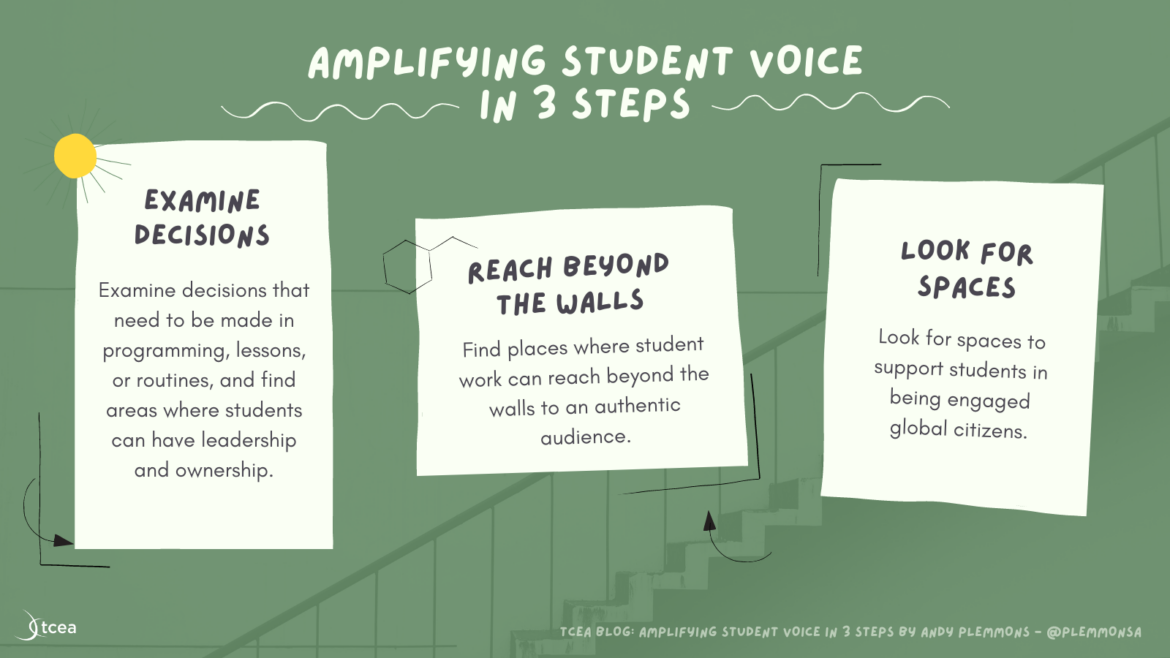What does it mean to amplify and empower student voice? This is a question I’m pondering a lot. Student voice has always been a core component of our library program at David C. Barrow Elementary, but each year I try to push my understanding of student voice and how to give students more space to explore their interests, ideas, and passions, as well as have ownership of what happens in their learning journey.
Here are a few ways that you might consider exploring student voice in your own library or classroom.
1: Examine decisions that need to be made in programming, lessons, or routines, and find areas where students can have leadership and ownership.
In the book Expect More, David Lankes reminds us “We should expect more than simply being consumers or users of the library; we should expect to be members — helping to shape the library itself.”
Library purchasing is one area where I make sure students have a voice. Rather than just having a wish list where students can suggest books, I reserve a portion of our budget each year for complete student control. Students in third through fifth grade apply to be in our student book budget group. During several meetings across two months, students create an interest survey, survey as many students in the school as possible, analyze the results, set purchasing goals, meet with vendors, create consideration lists, narrow lists to meet a budget, unpack and genre-fy the purchases, and display the books for checkout. I act as a facilitator. If students are going to feel like members of our space, they must help create the collection that we have.
2: Find places where student work can reach beyond the walls to an authentic audience.
Another person I look to for wisdom is Alan November. He said, “An audience of one, the teacher, is no longer sufficient to prepare students for success in a global economy.” One way I use my social media connections is to share student work and invite other classrooms or individuals to engage with the work of students. As student work is viewed by others beyond our walls, I share comments and locations with students.
Each winter, our second graders engage in a project called the Barrow Peace Prize. In that project, students research a person from history, write a persuasive piece on why that person represents peace, create a piece of art to represent their person, and record a Flipgrid video of their work. Through social media, I invite people to watch the videos and vote on which person from history should win the prize. Along the way, I share a map with students so they can see where their work is being viewed, and they are amazed to see dots populate from all over the world and know their voice was heard. I also use previous years’ projects to show the current students, and it is amazing how the students step up to offer their very best creations when they know it is actually being viewed beyond our walls.
3: Look for spaces to support students in being engaged global citizens.
In the book Be A Changemaker by Laurie Ann Thompson, Bill Drayton says “Don’t wait. Don’t wait to be powerful to change the lives and communities around you significantly.” We are teaching citizens of the world, and we have an opportunity to help students explore current events and needs in the world and see how they can get involved no matter what age.
Our fifth grade has started a citizen voice project where students explore the Global Goals, read current local/US/world news, and consider what topics matter to each individual. For some, it’s animal rights. For others, it’s marriage equality. Whatever the topic, we support students as they research their topic and compare it with the social studies standards that we explore in fifth grade throughout the year. By the end of the year, each student creates a change project to take action on the topic they have chosen. The fifth grade teachers and I help students get their projects down the right avenues to be heard. Projects have ranged from letters mailed to government officials to a peace flag banner displayed at a location where gun violence occurred. Our role is to let students know their voice matters even at a young age and help connect them with the right paths to be heard.
Next Steps
Although student voice is important to me, I’m a long way from feeling like it permeates all areas of our library and school. I simply keep working on it, keep listening to students, and keep looking for more ways to bring student ideas, choice, decisions, and creations into our planning and program.
If you wish to read more about our library program, follow along at Expect the Miraculous, Twitter, and Instagram.

